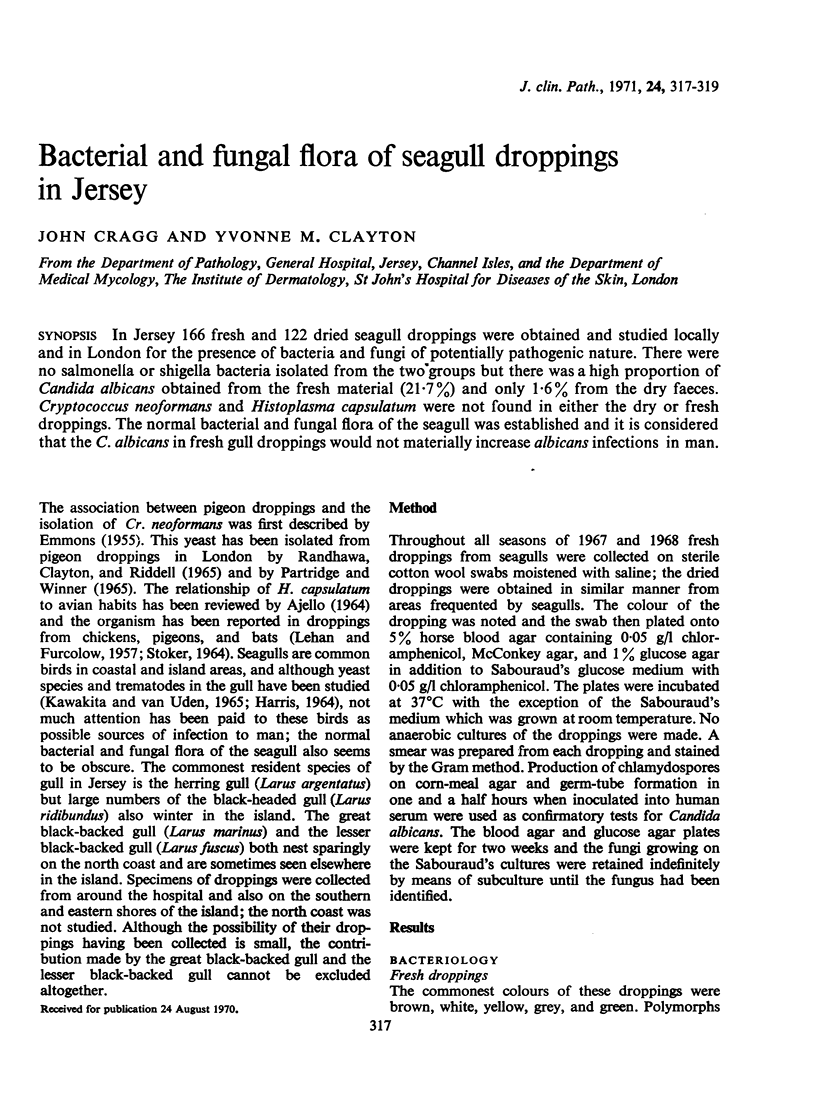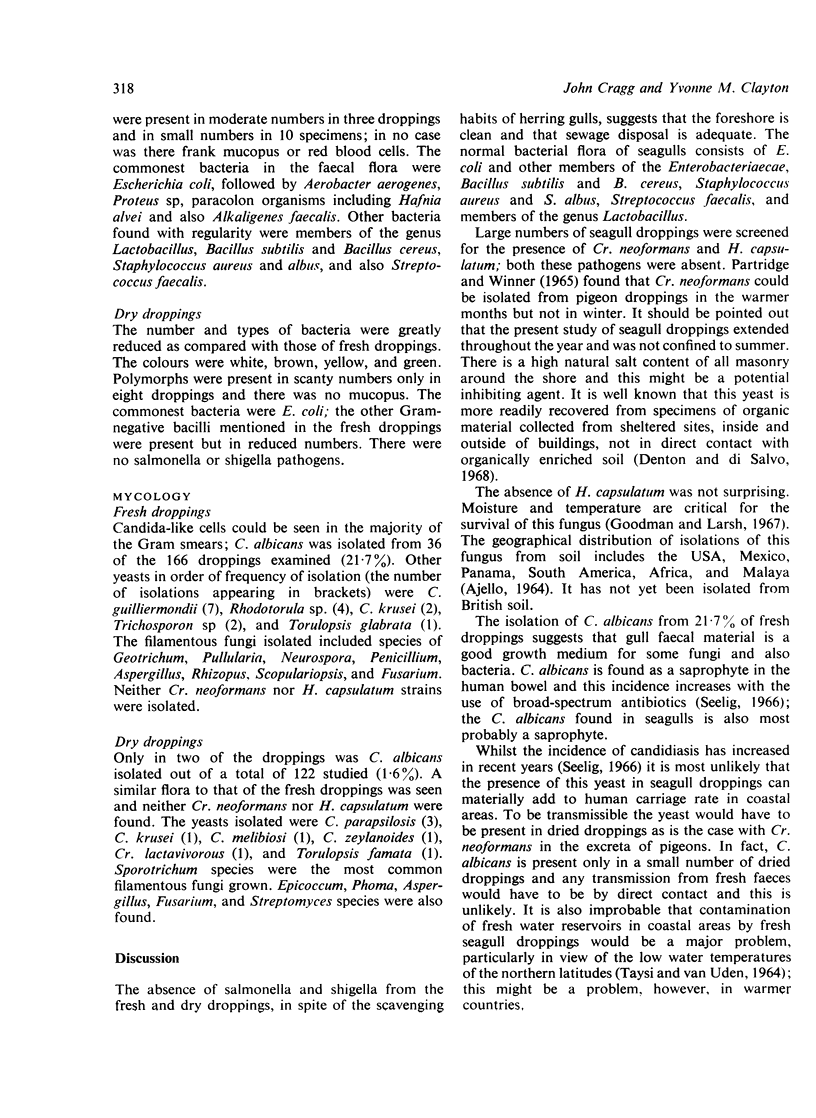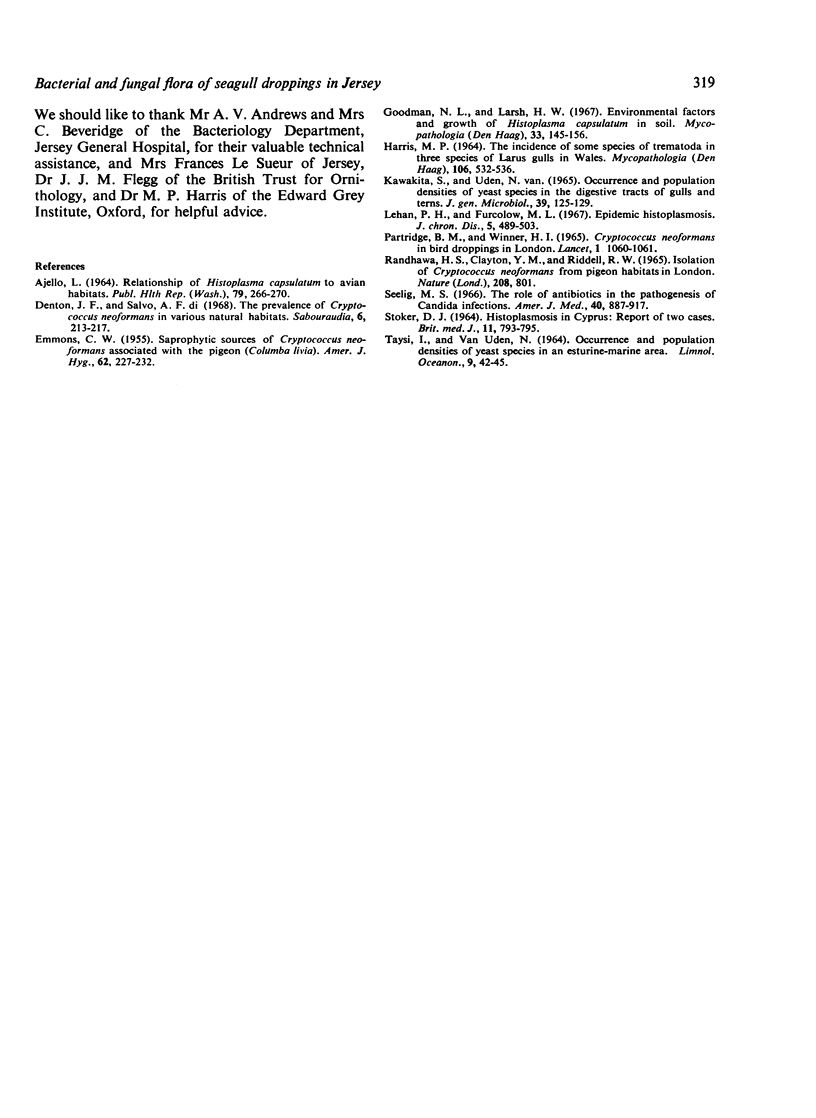Abstract
In Jersey 166 fresh and 122 dried seagull droppings were obtained and studied locally and in London for the presence of bacteria and fungi of potentially pathogenic nature. There were no salmonella or shigella bacteria isolated from the two groups but there was a high proportion of Candida albicans obtained from the fresh material (21·7%) and only 1·6% from the dry faeces. Cryptococcus neoformans and Histoplasma capsulatum were not found in either the dry or fresh droppings. The normal bacterial and fungal flora of the seagull was established and it is considered that the C. albicans in fresh gull droppings would not materially increase albicans infections in man.
Full text
PDF


Selected References
These references are in PubMed. This may not be the complete list of references from this article.
- AJELLO L. RELATIONSHIP OF HISTOPLASMA CAPSULATUM TO AVIAN HABITATS. Public Health Rep. 1964 Mar;79:266–270. [PMC free article] [PubMed] [Google Scholar]
- Denton J. F., Di Salvo A. F. The prevalence of Cryptococcus neoformans in various natural habitats. Sabouraudia. 1968 Jun;6(3):213–217. [PubMed] [Google Scholar]
- EMMONS C. W. Saprophytic sources of Cryptococcus neoformans associated with the pigeon (Columba livia). Am J Hyg. 1955 Nov;62(3):227–232. doi: 10.1093/oxfordjournals.aje.a119775. [DOI] [PubMed] [Google Scholar]
- Goodman N. L., Larsh H. W. Environmental factors and growth of Histoplasma capsulatum in soil. Mycopathol Mycol Appl. 1967 Nov 13;33(2):145–156. doi: 10.1007/BF02053445. [DOI] [PubMed] [Google Scholar]
- KAWAKITA S., VANUDEN N. OCCURRENCE AND POPULATION DENSITIES OF YEAST SPECIES IN THE DIGESTIVE TRACTS OF GULLS AND TERNS. J Gen Microbiol. 1965 Apr;39:125–129. doi: 10.1099/00221287-39-1-125. [DOI] [PubMed] [Google Scholar]
- LEHAN P. H., FURCOLOW M. L. Epidemic histoplasmosis. J Chronic Dis. 1957 Apr;5(4):489–503. doi: 10.1016/0021-9681(57)90117-0. [DOI] [PubMed] [Google Scholar]
- PARTRIDGE B. M., WINNER H. I. CRYPTOCOCCUS NEOFORMANS IN BIRD DROPPINGS IN LONDON. Lancet. 1965 May 15;1(7394):1060–1061. doi: 10.1016/s0140-6736(65)91336-x. [DOI] [PubMed] [Google Scholar]
- Randhawa H. S., Clayton Y. M., Riddell R. W. Isolation of Cryptococcus neoformans from pigeon habitats in London. Nature. 1965 Nov 20;208(5012):801–801. doi: 10.1038/208801a0. [DOI] [PubMed] [Google Scholar]
- STOKER D. J. HISTOPLASMOSIS IN CYPRUS: REPORT OF TWO CASES. Br Med J. 1964 Sep 26;2(5412):793–795. doi: 10.1136/bmj.2.5412.793. [DOI] [PMC free article] [PubMed] [Google Scholar]
- Seelig M. S. The role of antibiotics in the pathogenesis of Candidainfections. Am J Med. 1966 Jun;40(6):887–917. doi: 10.1016/0002-9343(66)90204-x. [DOI] [PubMed] [Google Scholar]


